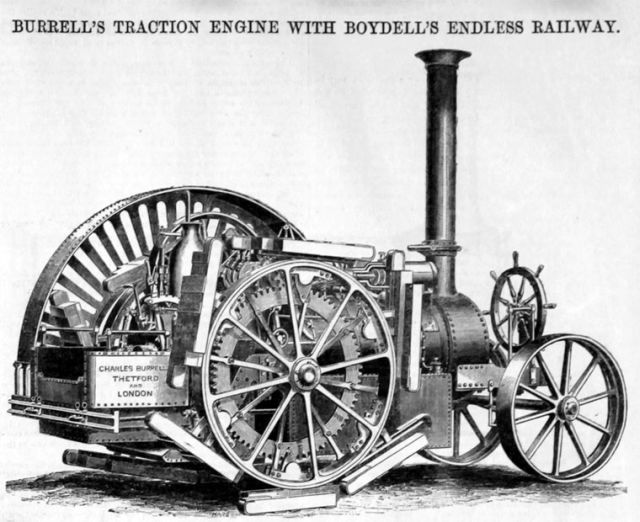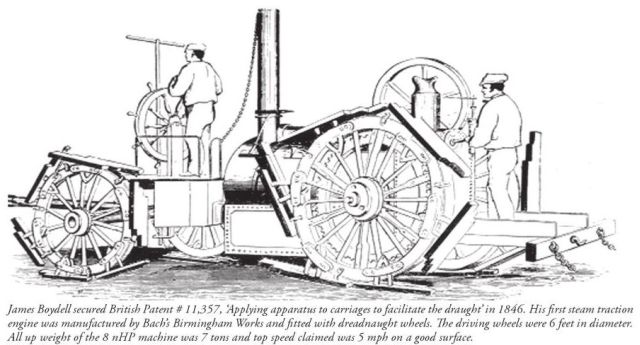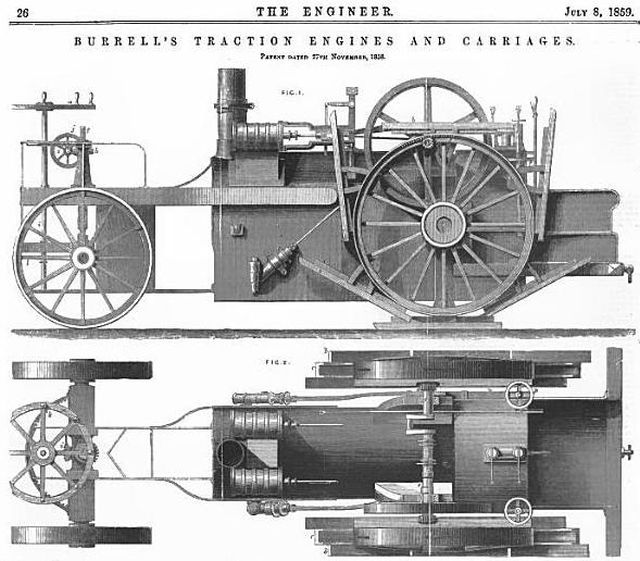1846 – Walking Wheel by James Boydell
A dreadnaught wheel is a wheel with articulated rails attached at the rim to provide a firm footing for the wheel to roll over, they have also been known as endless railway wheels when fitted to road locomotives, and were commonly fitted to steam traction engines.
Bottrill's "Big Lizzie" with Dreadnaught wheels
Prior to wide adoption of continuous track on vehicles, traction engines were cumbersome and not suited to crossing soft ground or the rough roads and farm tracks of the time. The "endless rails" were flat boards or steel plates loosely attached around the outer circumference of the wheel which spread the weight of the vehicle over a larger surface and hence were less likely to get bogged by sinking into soft ground or skidding on slippery tracks.
Some references also use the term pedrail, but the pedrail wheel of 1903 is a more complex arrangement that incorporates internal springing.
Bottrill referred to the rails as "ped-rail shoes".
Image source: Remarkable Australian Farm Machines: Ingenuity on the Land By Graeme R. Quick
An early version was patented (British 11,357) by James Boydell in August 1846 and February 1854. Boydell worked with the British steam traction engine manufacturer Charles Burrell & Sons to produce road haulage engines from 1856 that used his continuous track design. Burrell later patented refinements of Boydell's design.
Boydell's design saw service with the British Army in the Crimean War where it was known as "The Megatherium war horse".
Source with references: Wiki
See other early Walking Wheels and Walking Machines here.


